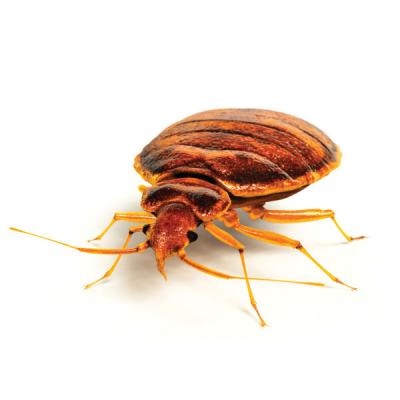Bed Bug Control
Bed bugs disappeared from Great Britain about 20 years ago, but then people started backpacking and brought them back. Today they are a major problem in hotels, aircraft, student accommodation, trains and other places where people sit and spend time. Anyone staying in an infested hotel or using an infested train could then bring those bed bugs into your home or business.
Bed bugs aren't something that people like to admit to having, so some people try to deal with the problem themselves. However, this has led to bed bugs becoming resistant to some insecticides.
How to identify a Bed Bug problem
Bed bugs are visible to the naked eye. They live in the cracks and crevices of mattresses and headboards. They also live behind curtain boards, in plug sockets and any other little gap where they can hide until feeding time. To identify a bed bug infestation, check around the edges of the mattress, the buttons, springs and the headboard for black marks. These are the bed bugs' droppings.
Often the first indication of bed bugs is blood spots on sheets followed by itching. Bed bugs appear at night to feed on whoever is in the bed. Their bites cause irritation, distress and, unlike mosquito bites, will cause bleeding without scratching. Sometimes it can take up to 24 hours to react to a bite.
Scratching the bites can lead to secondary infection. By the time people realise there is a problem, it will be quite bad.
How to reduce the risk of Bed Bugs
Bed bugs don't just appear in your home or business, they have to hitch a lift on something.
Here are eight things you can do to protect your property from invasion:
1) If you are staying in a hotel, check the headboard for little spots that look like ink and carefully inspect the mattress. If in doubt, ask for another room. While you are in the hotel, keep your belongings tidy and check your bags before leaving
2) Student accommodation can be particularly prone to infestations, so check your children's luggage when they visit.
3) Don't think because it's not a bed, it can't be a bed bug. They will hide in all sorts of crevices - furniture, electric sockets, etc. - so check these regularly
4) Check and wash sheets regularly and use mattress covers
5) Choose a metal framed bed (fewer places for bed bugs to hide)
6) Regularly clean and inspect possible hiding places like folds in curtains
7) Be wary when bringing in second-hand furniture and clothing, there could be bed bugs hiding inside
8) If you have an infestation, get rid of the contents in your vacuum cleaner immediately after use to stop them crawling out
Find out more about bed bugs in our article 'Bed Bugs - prevention is better than cure'
How to get rid of Bed Bugs
DIY is not advisable as bed bugs are now resistant to many common treatments and rather than making the problem go away, you may just be letting the infestation get worse.
We provide both specialist insecticidal and heat treatments. The latter involves placing all infested items in a special bubble, which is then heated to kill the bed bugs.
Contact us today for more information and advice about bed bug control & removal services >
Fun facts about Bed Bugs
- Bed bugs are small insects that feed on human blood and are most active at times during the night when we are in our deepest sleep.
- A single adult bed bug can live for up to a year without feeding as they go into a dormant state.
- Once feeding regularly, a female bed bug will lay up to 500 eggs in a couple of months.
- Bed bugs are transported from infested areas when they cling onto clothing, or crawl into luggage, furniture or bedding
- Temperatures below 25 degrees F will freeze and kill bed bugs.
- Bed bugs are exceptionally difficult to get rid of because they hide so well and don't need to feed very often.
- Bed bugs mustn’t be confused with house dust mites who also live in our beds and mattresses but feed on shed human skin rather than blood.
